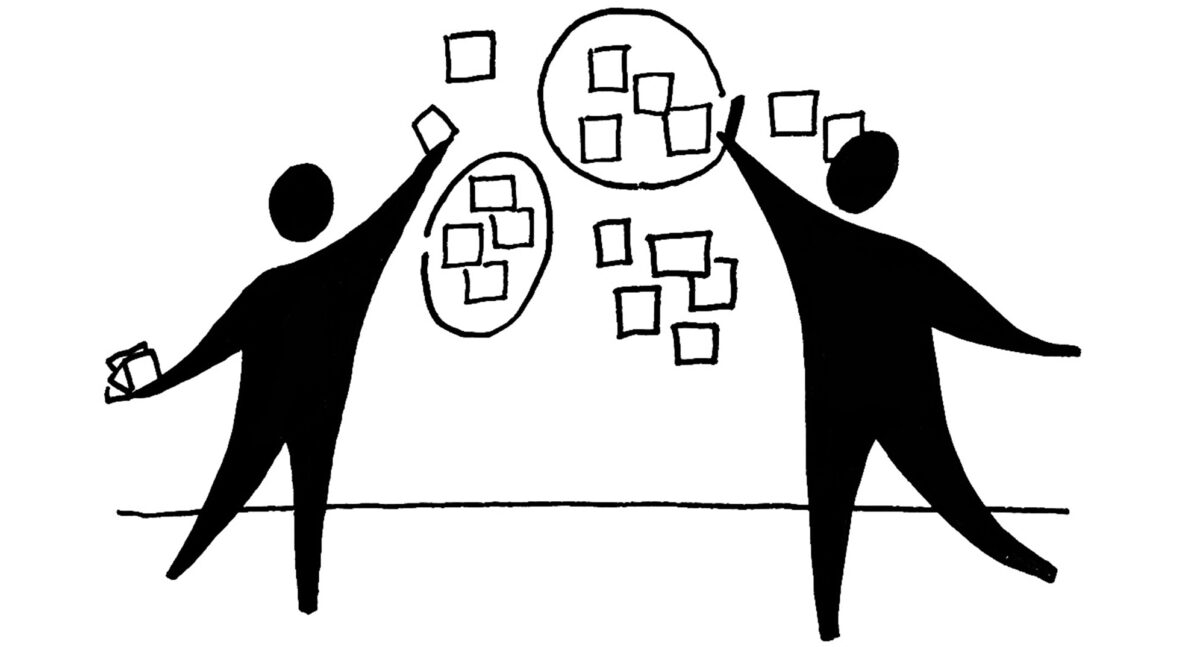Affinity clustering is a graphic technique for sorting items according to similarity and can help avoid the roadblock of information overload. Patterns are revealed when teams sort items based on perceived similarity, defining commonalities that are inherent but not necessarily obvious. In this way, insights are more readily drawn and innovative ideas emerge out of otherwise disparate pieces of information. Discerning patterns among data (or any multitude of items) is also a useful way of taming complexity.
STEPS:
- Identify a topic for consideration.
- Gather data set (research findings, ideas, etc.).
- Record each item on a separate card or sticky note.
- Form a team of collaborators and pick a facilitator.
- Have one person describe and place an item. Invite others to place similar items in proximity. Repeat the pattern until all items are placed.
- Discuss and rearrange items as grouping emerge.
- Label the final clusters that take shape.
CONSIDERATIONS:
- Do not label the clusters too early, they may shift.
- Look for opportunities to create subgroupings.
- Consider using color to code different types of data.
REFERENCES:
- LUMA Institute. (2012). Affinity Clustering. In Innovating for people: Handbook of human-centered design methods. essay.


